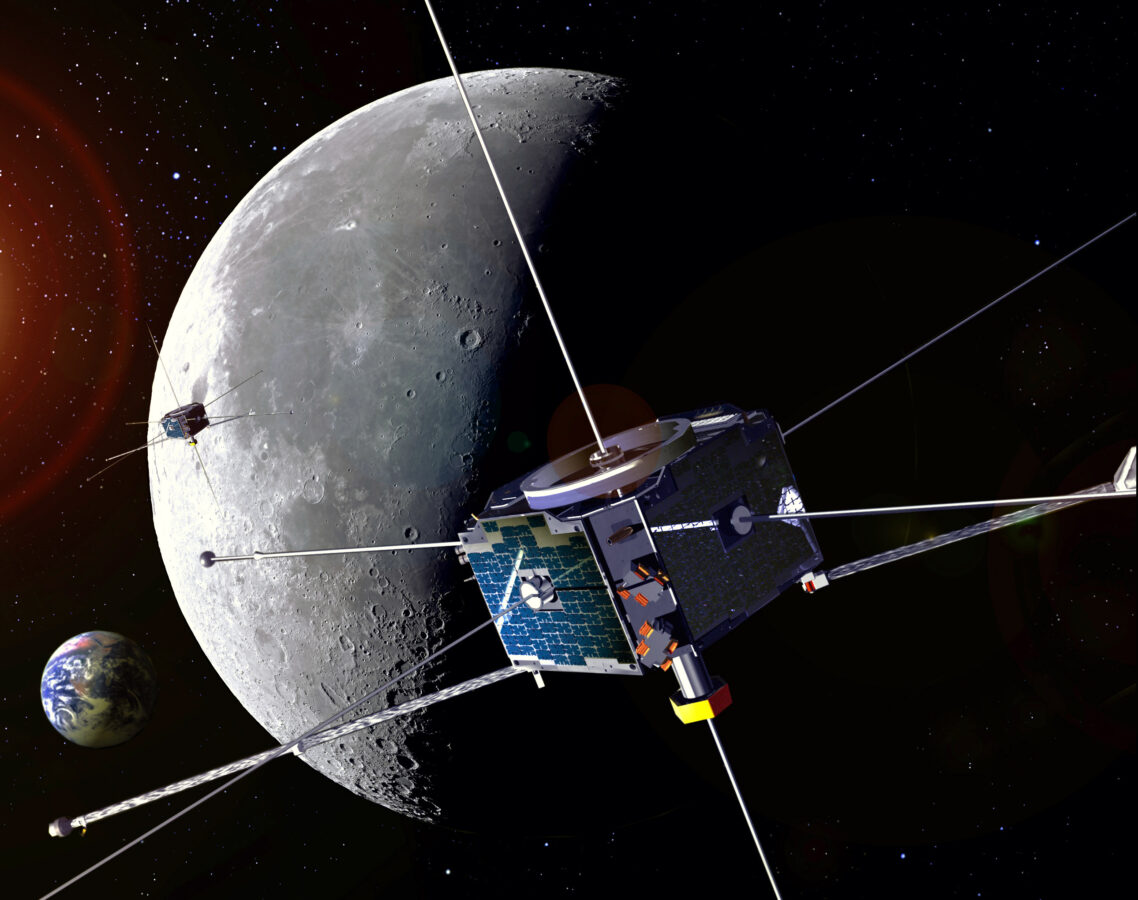As space exploration, science, and technology advances at an ever-faster rate, an entirely new economy, the space economy, has sprung up. In fact, by 2040 the space economy is projected to be the next trillion dollar industry. With that realization in mind, the UCLA Anderson Forecast, UCLA SPACE Institute, and the UCLA Division of Physical Sciences hosted its first Space Economy Forecast and panel on May 3rd, 2023.
The event, moderated by UCLA Anderson Forecast faculty director Jerry Nickelsburg, featured top leaders from academia, the investment and entrepreneurial communities, and workforce development with a specific focus on diversity, equity and inclusion. Janeya Griffin, co-founder and CEO of the Equity Space Alliance, Storm Boswick, Founder of TRE Advisors, and Jon Arenberg, Chief Mission Architect, Science and Robotic Exploration at Northrop Grumman all joined the panel.
The UCLA SPACE Institute, which took the lead in organizing the event, is a transdisciplinary and interdepartmental community which seeks to elevate space science through a variety of initiatives. “For decades, UCLA has been a leader in advancing space science, exploration, and innovation,” said Miguel Garcia-Garibay, Dean of the UCLA Division of Physical Sciences. “In light of unprecedented investment in this sector from government and industry, our university is well positioned to engage our talent pool to take advantage of this moment.”
Following an overview by Nickelsburg on the economic setting of the space economy as it stands today, the panel discussed some of the most pressing issues, challenges, and opportunities that face this exciting new economic arena. The discussion was followed by questions from the audience, which included an in-depth talk about the topic of space law and its implications for society and exploration.
Now, more than ever, we need a generation of scientists who are trained to think and solve problems in new ways. The SPACE Institute is further strengthening UCLA’s position as a leader in space science research and education.
Professor Jacob Bortnik
Another important topic was the growing commercialization of space, which Arenberg likened to the growth of the aviation industry in the early parts of the 20th century. “As aviation matured in the 1920s and again in the 40s, it grew from a military and single-commercial model to a diverse and broad economy. That is what we are already seeing with the space economy, and we can only expect that trend to continue.”
This increased commercialization has been realized, in part, thanks to the collapsing costs related to launches. “You can call this the ‘Space-X Phenomenon,” said Boswick. “Suddenly, space has become highly available to a host of traditional industries that may not have gotten involved in this arena just a few years ago.” That collapsing cost has, in turn, made it more possible for a variety of individuals, companies, and institutions to begin experimenting more with space-related products and services.
Of course, the emergence of any new economy necessitates a well-trained workforce to accommodate its growth. But society is not always intentional about the social implications that come along with major economic changes. “We have a great opportunity to, from the beginning, push educational models that will raise up a new generation of diverse space scientists who are trained to think not just about the technology, but about how it will impact society and our communities,” said Griffin.
For Jacob Bortnik, professor of Atmospheric and Oceanic Sciences and director of the UCLA SPACE Institute, this event could not have come at a more important time. “Now, more than ever, we need a generation of scientists who are trained to think and solve problems in new ways,” he said. “Through this event, and ones like it we have planned in the future, the SPACE Institute is further strengthening UCLA’s position as a leader in space science research and education.”
More information about the UCLA Space Institute and upcoming events can be seen here.
Watch a recording of the Space Economy Forecast Panel Below
Tags: space, Space economy, space Institute
 The UCLA Anderson Forecast and the UCLA Space Institute Lecture hosted the panel discussion on May 3rd, 2023 (PHOTO CREDIT: John Moore/NASA)
The UCLA Anderson Forecast and the UCLA Space Institute Lecture hosted the panel discussion on May 3rd, 2023 (PHOTO CREDIT: John Moore/NASA)